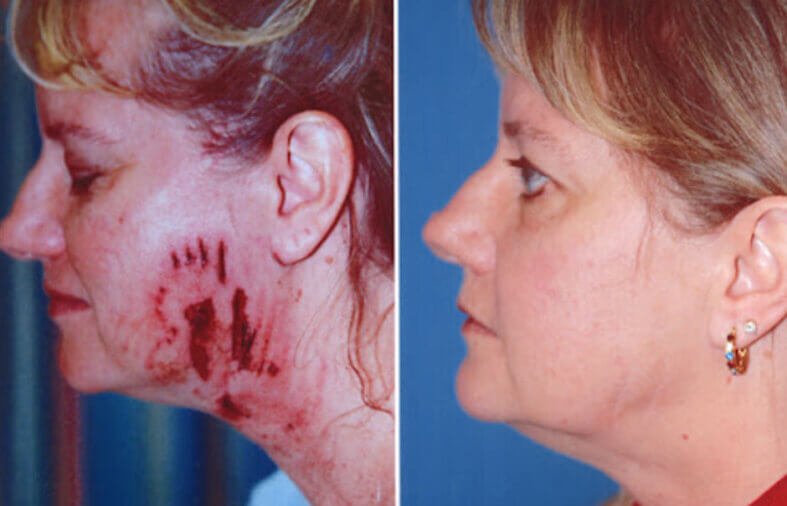Facial trauma can result from car accidents, fires, falls, physical assaults, or other incidents that result in injuries to the face. Facial trauma includes lacerations, broken bones, facial nerve damage, and burns. Plastic surgeons perform corrective surgeries to help restore form and function after these injuries. Here are several ways that plastic surgery can help after facial injuries:
1. Minimize Scarring
If you experience cuts, burns, or other wounds on the face that result in scarring, plastic surgery can help minimize facial scarring to improve facial aesthetics and movement. While scars cannot be erased completely, scar revision helps minimize scars so they blend in with the skin tone and texture around them. Scar revision procedures vary according to the type, severity, and size of the scarring. Repeatable injectable treatments such as dermal fillers can help fill in concave scars for three months to several years.
Surface treatments address skin irregularities and uneven pigmentation by either removing the top layers of skin or changing the tissue. Dermabrasion polishes your skin, and laser or light therapy allows for healthy skin to grow at the site of the scarring. Botox and Juvederm are injectable products that help remove signs of wrinkles and reduce tension around scars.
Excision refers to the surgical removal of scars. Surgical techniques such as flap closures and Z-plasty help redirect or reposition the scar so it is less discernible. Contractures are scars that restrict movement and occur in cases of significant tissue loss, such as burns. These techniques help improve scar flexibility, making it easier to move your face. Skin grafts or tissue expansion procedures help close the wound. The initial healing phase after surgical scar revision is a few weeks. The healing process will likely take several more weeks after that, depending on the type and severity of the scar.
2. Repair Facial Nerves and Movement
Traumatic facial injuries can damage the facial nerves, impacting your quality of life. The facial nerve and muscles help you speak, chew, keep your face symmetrical, and open and close your eyes. Facial nerve dysfunction varies, ranging from minor asymmetry and weakness to complete facial paralysis. A plastic surgeon can help improve your facial movement and repair facial nerves.
Dynamic facial animation techniques help restore active facial movement. These include:
- Midface or full facelifts to improve cheek and mouth asymmetry
- Tissue removal to improve droopy lips
- Slings to support sagging eye muscles
- Supporting stitches or stiffer grafts to improve nostril collapse
If two ends of the nerve are available, your surgeon can perform repairs through reconstructive microsurgery. Reconstructive microsurgery is the field of plastic surgery that uses microscopes and precision instruments to repair and graft nerves, transfer tissues, and even replace digits. Nerve grafts are taken from the surrounding nerves or from the opposite side of the facial nerve. If it is performed early enough, nerve transfers can restore facial movement and tone. Muscle transfer is an option in cases of longstanding paralysis.
Talk to your surgeon about the different facial reanimation and nerve repair techniques available and what will be most beneficial for your condition. Ask questions about what to expect during the recovery process and times to schedule follow-up appointments and treatments.
3. Reshape the Nose
If your nose has experienced blunt force trauma or another type of injury, plastic surgery can reshape your nose and improve your breathing. Factors that impair nasal breathing include nasal airway blockage and valve collapse. A functional rhinoplasty helps with cosmetic correction by fixing crooked noses and nasal fractures as well as restoring internal airflow.
Functional rhinoplasty surgery takes around two to four hours. Minimal incisions are made inside or outside the nose, and the bone and cartilage are rearranged. After the surgery, you will have temporary soft splints inside of your nose and a harder splint outside of the nose to keep the new shape. You may see immediate improvement in your breathing and your nose shape.
Find a Surgeon for Plastic Surgery
Facial repair after physical trauma is a multistep process that involves sealing the initial wounds, fixing the structural components, and reworking the components. Plastic surgery can fulfill both cosmetic and functional purposes to help restore your face after injuries. Look for a board-certified plastic surgeon to help you recover from facial trauma.








